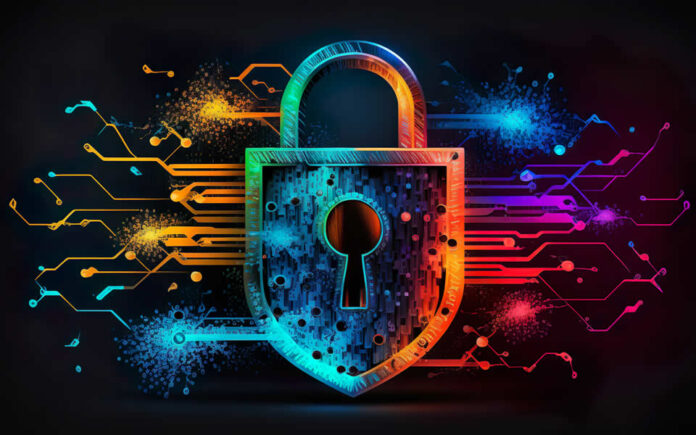In our increasingly digital world, protecting sensitive data and systems from cyber threats is more critical than ever. While no solution can guarantee full security, adopting comprehensive cybersecurity frameworks helps organizations establish robust, adaptive protections.
These frameworks provide structured guidance to strengthen security across people, processes, and technologies. This article will explore some widely-used cybersecurity frameworks and how adopting their principles can help safeguard digital assets from various risks.
NIST Cybersecurity Framework
The National Institute of Standards and Technology (NIST) Cybersecurity Framework is one of the world’s most widely accepted guides. The Framework provides a risk-based approach to cybersecurity management, which was developed in 2014 through a multi-stakeholder process.
The Core comprises three parts: the Core, Implementation Tiers, and Profiles. The Core identifies five concurrent functions: Identify, Protect, Detect, Respond, and Recover. It further provides the categories and subcategories for the organization, considering each of the functions, which will help decide on the strategies it should develop or review its cyber readiness.
The CMMC model comprises five maturity levels, ranging from a “tiered target level” that reflects basic, intermediate, or advanced. Organizational improvements would be prioritized based on how current practices compare to the target level. Framework Profiles allow an organization to develop its customized Cybersecurity and Risk Management Framework based on the relevant Cybersecurity Framework categories and subcategories.
Taking it through the NIST Framework steps and constantly gauging progress, the companies will strengthen their cybersecurity methodically, as per the requirements. It stays valuable even for an organization that already has some programs.
ISO/IEC 27000 Standards Cybersecurity
Developed by the International Organization for Standardization (ISO) and the International Electrotechnical Commission (IEC), the ISO/IEC 27000 family provides best practice recommendations for information security management systems (ISMS).
The primary standard, ISO/IEC 27001, establishes requirements for implementing a robust ISMS with defined policies, processes, roles, and controls. Some key elements are risk assessment and treatment measures, security policy, internal audits, and continuous monitoring/improvement of the ISMS.
Complementing standards detail specific aspects like the certification process (ISO/IEC 27006), code of practice (ISO/IEC 27002), and information security controls (ISO/IEC 27003). These standards lend clarity to establishing organizational structures, documentation, resilience planning, and more to reduce information security risks.
Independent certification against ISO/IEC 27001 ensures a mature, formally audited ISMS. While not mandatory, certification boosts assurance for partners and customers by validating that security objectives are properly implemented and managed.
NIST Privacy Framework
Complementing its cybersecurity guidelines, NIST created the Privacy Framework in 2018 to help organizations address expanding privacy regulations and societal expectations.
Similar to the Cybersecurity Framework, NIST’s Privacy Framework outlines a risk-based approach through core functions of Identifying, Protecting, Detecting, Responding, and Recovering privacy risks within institutional governance frameworks such as FISMA and FIPPs. It can work with cybersecurity programs to build a robust risk management regime.
Therefore, to implement the NIST Privacy Framework, organizations should first establish a cross-functional privacy team to drive the effort. This team would be responsible for conducting an initial privacy risk assessment to understand what personal data is collected, how it flows within the organization, and what privacy laws apply. The assessment results would then be used to select relevant privacy categories and subcategories from the Framework based on priority risks.
Policies, procedures, and controls would be documented to address each selected category. For example, policies may be developed around data collection limitations, individual access and correction rights, and high-risk data use restrictions. Technical controls like access control lists, data encryption, and activity monitoring may also be implemented. The team should also develop templates for privacy notices and consent mechanisms. Regular review and testing ensure the privacy program evolves with new risks and regulations.
ISO/IEC 27701 Extension
In response to privacy’s growing prominence, the ISO 27701 standard was developed in 2019 as an extension guideline for ISO/IEC 27001-conformant ISMS. It provides a mechanism to establish, implement, operate, monitor, review, maintain, and improve an ISMS that protects personally identifiable information.
Specifically, ISO 27701 helps address the “privacy by design” concept through defined organizational structures, policy requirements, risk assessments, control selection, information processing restrictions, and records of processing activities. It aims to protect and maintain privacy throughout the data lifecycle and promotes continuous improvement through objective evaluations.
Even small and medium enterprises can benefit by following key ISO 27701 requirements to establish privacy governance that respects regulatory obligations and builds trust. Certification makes a strong claim about information handling practices relevant in regulated domains like healthcare and finance.
Implementation Strategies
While frameworks differ in scopes, structures, and intended uses, commonalities exist to develop a unified security program:
- Senior management buy-in drives sufficient resources and accountability.
- Cross-functional teams address different needs through designated roles.
- Initial risk assessments provide a baseline understanding of how to prioritize issues.
- Custom policies and procedures close control gaps in a documented form.
- Staff training creates awareness while technical controls enforce policies.
- Monitoring mechanisms ensure ongoing oversight and issue resolution.
- Reviews and iterations refine measures based on evaluation feedback.
Adopting multiple frameworks in an integrated manner delivers improved protection versus any single option alone. Their combined guidance significantly strengthens inherent digital security resilience over time.
Wrapping Up
With cyberattacks and data misuse growing threats, cybersecurity and privacy frameworks play an invaluable role in safeguarding organizational interests. Their risk-based, systematic direction empowers institutions to comprehensively assess exposures, take targeted preventative measures, and adapt measures as needed.
While no defense guarantees perfection, adopting recommended practices widely improves overall protection for businesses, governments, and individuals in the hybrid cyber realm. Continuously drawing from robust frameworks builds lasting digital defense capabilities.















